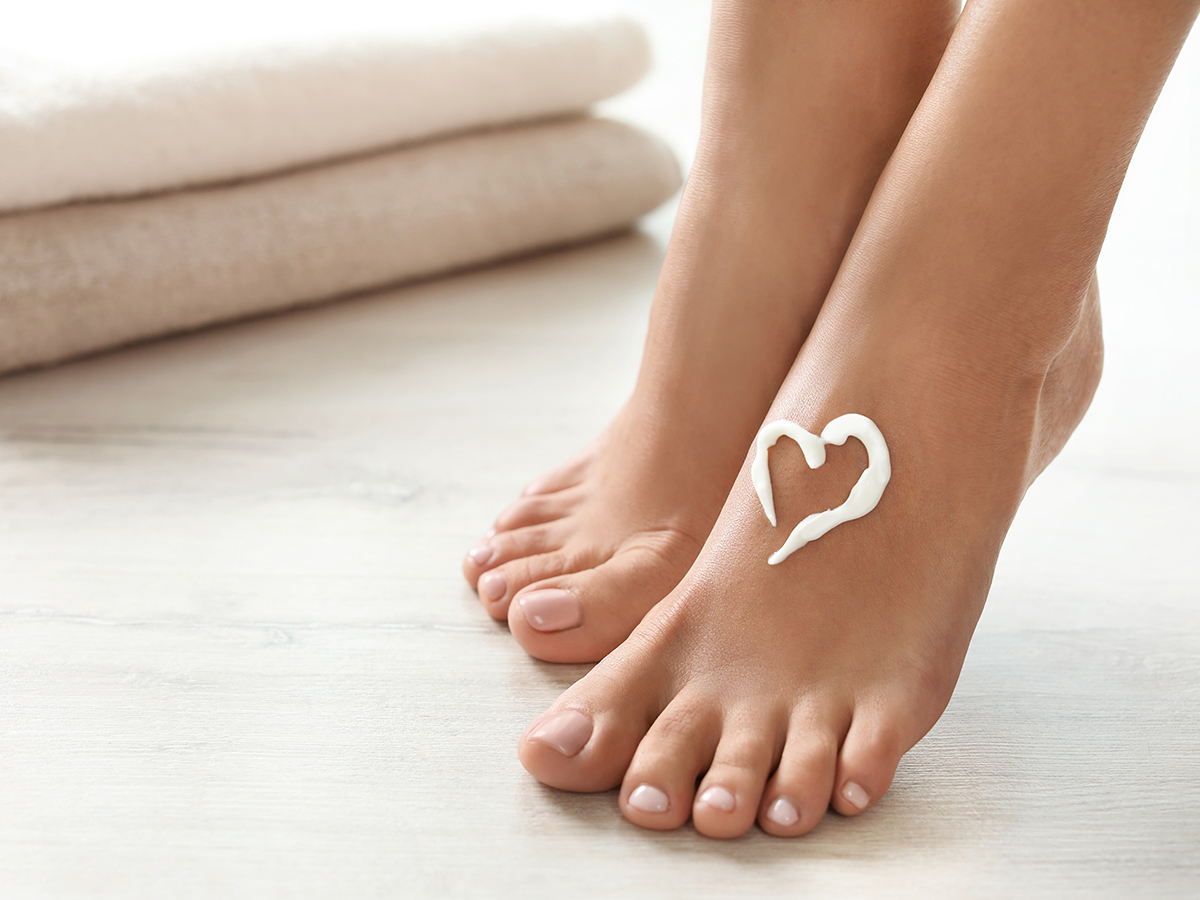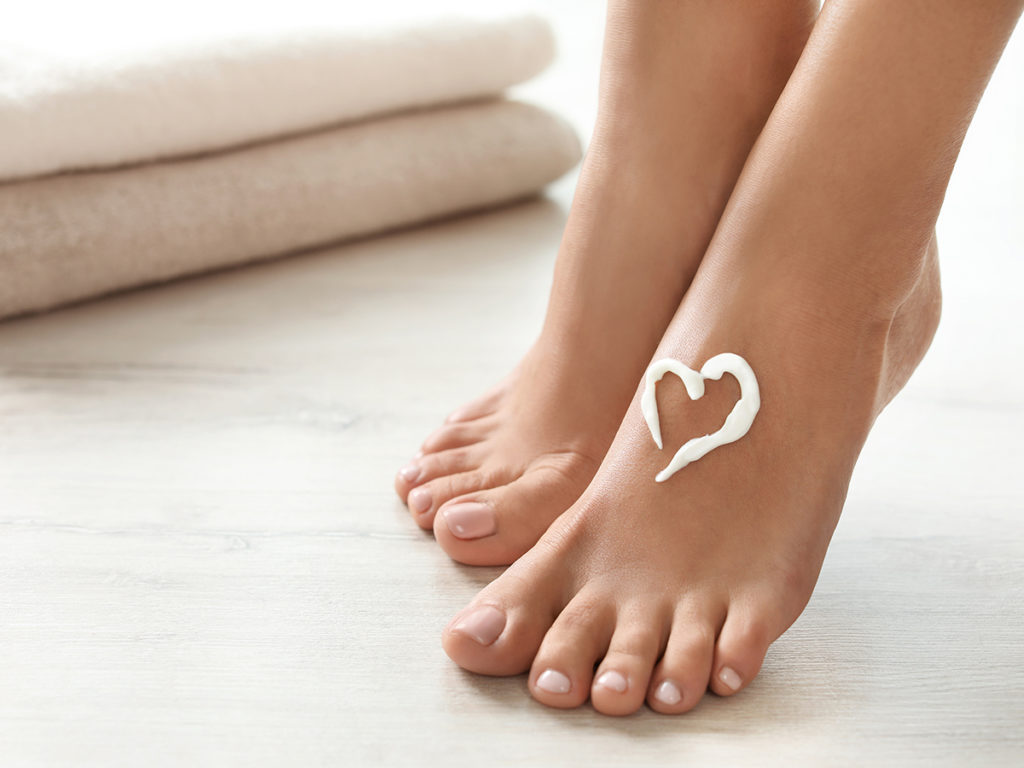

Just like any relationship in our lives, the one we have with our feet is two-sided: we look after them, and they’ll look after us as we take approximately 2.7 million steps every year. Whatever the challenge – hot ground, countless stairs, unsteady terrain, sharp rocks at the beach – we have the one pair of feet that get us through – and the way we treat and look after them will determine how long they can keep doing it for.
When it comes to caring for our feet – it’s easier than many people realise as it’s the little things over time that can make a big difference. To help treat your feet, our podiatrists have shared ten things your feet will love that will help them stay healthy and happy.
1. Give Your Feet A Good Wash
Despite coming in contact with the ground all day every day, it’s not uncommon for the feet to just get a quick rinse in the shower without taking the same time we do for our hair or face to use soap or exfoliating scrub to clean well between the toes and all around the toenails. Cleaning our feet well helps remove the dirt and bacteria that can build up.
When you’re out of the shower, take the time to dry them well. Leaving moisture from improper drying between the toes encourages the growth of Athlete’s foot, and may cause maceration – the softening and breakdown of skin, which can quickly turn painful and make you vulnerable to infection.
2. Get Any Corns, Calluses Or Cracks In The Heels Removed
Corns, calluses and cracked heels all start as a build-up of hard, dead skin on the feet. Corns can feel like walking on small pebbles and look like small circular lumps on the bottom of the foot. Calluses are larger than corns and can cover a small or a large foot area. Both corns and calluses develop as a result of pressure or friction on the area they are located in.
Cracked heels occur when thick callus on the heel dries out and cracks. In some cases, it also cracks the healthy skin beneath which may bleed. Corns, calluses and cracked heels can all be removed safely, effectively, painlessly, and in one appointment with your podiatrist.
3. Moisturise & Self Massage
Moisturising your feet daily may be the most understated way to best take care of your feet – and one you should prioritise. Keeping your feet well-hydrated can help prevent dryness and cracks and maintain your skin health and texture. When applying a good quality moisturising cream, massage it all through the feet, including the balls and heels of your foot, while avoiding the space between your toes to help demote infections and maceration. The massage can also help with circulation – while looking at your feet daily while you moisturise will also help inform you of any changes to your feet to raise with your podiatrist.
4. Wear Good, Comfortable Shoes
You know how different it feels to walk on soft carpet in bare feet compared to on concrete tiles. The shoes we choose become the ground for our feet – and can act to support and cushion, or to leave our feet fending for themselves on a tough, unforgiving and unsupportive surface of a shoe.
Many of our clinics have retail stores so you can try on and get the best shoes for your feet – and not just ones that feel great, but shoes that fit your foot type, too. We have podiatrists and trained staff available to ensure you get the best fit and maximum comfort. We have an online store too.
5. Ditch The Flat Thongs
Speaking of shoes, one thing your feet will praise you for is swapping from flat, hard plastic thongs to ones that have in-built arch support and are better for your feet. There is a range of podiatrist-approved flip flops from brands like Scholl, Vionic, Archies and more, that come in styles specific for men and women.
6. Give Your Nails Professional Care
Our nail care appointments offer a comprehensive and all-inclusive service that immediately cares for your nail (and skin) concerns and leaves you feeling much more comfortable on your feet than when you first walked in. Your nails are cared for by our experienced podiatrists who:
- Trim all the toenails using podiatric nippers, no matter how thick or stubborn the nails
- Reduce toenail thickness using a burr
- Remove any surface discolouration from the nail that may be present
- Clear the sides of the nails of debris and hard skin build-up
- Care for any ingrown toenails (without surgery)
7. Avoid Salon Pedicures
Many nail salons carry a risk of picking up a fungal nail infection as it is uncommon for nail salons to properly sterilise the instruments they use on multiple people – even if they wipe them down. Sterilisation is a comprehensive process that requires first cleaning the instruments, then bagging them and putting them through a one-hour steam sterilisation cycle that raises the instruments to temperatures of over 120°C. This effectively kills any microbes and makes them completely safe to use.
If you’d like your nails to be painted, then we recommend using Drs Remedy nail polish after your professional nail care with your podiatrist.
8. Treat Warts & Fungal Infections Quickly In The Family
This is a preventative way to treat your feet – but a good idea nonetheless. Both warts and fungal nail infections can spread quickly through families sharing the same surfaces (floors, showers, even socks) at home. By treating these problems as soon as one member of the family develops them, you’re protecting the rest of the family’s feet from having to manage the condition and undergo treatment themselves.
9. Compression Socks For Swollen Or Achy Feet
If you have feet that are swollen, or that get tired or achy, treat them to some compression socks. Compression socks apply pressure to the feet and legs to help support your veins and promote blood flow, reducing discomfort and swelling.
10. Treat Any Existing Foot Pain
If you currently have foot pain or discomfort that you’re hoping will go away on its own – get it sorted. Pain never happens for no reason – it’s our body’s warning sign that something has either gone wrong, or is about to. Treating foot pain starts with an appointment with your podiatrist who conducts a thorough exam to understand what’s going on, why it has started, and what structures in the feet are affected. Together, they’ll form a treatment plan with you and get started on getting you back to moving and feeling great!
Ready To Treat Your Feet?
You only have one pair of feet – so look after them! If you need help in caring for your feet, our experienced podiatrists are here to help. With clinics across Australia, we’re proud to be your trusted local podiatry providers, committed to delivering exceptional service, every time.
Book your appointment with us online here or call us on 1800 FOOT DR.


